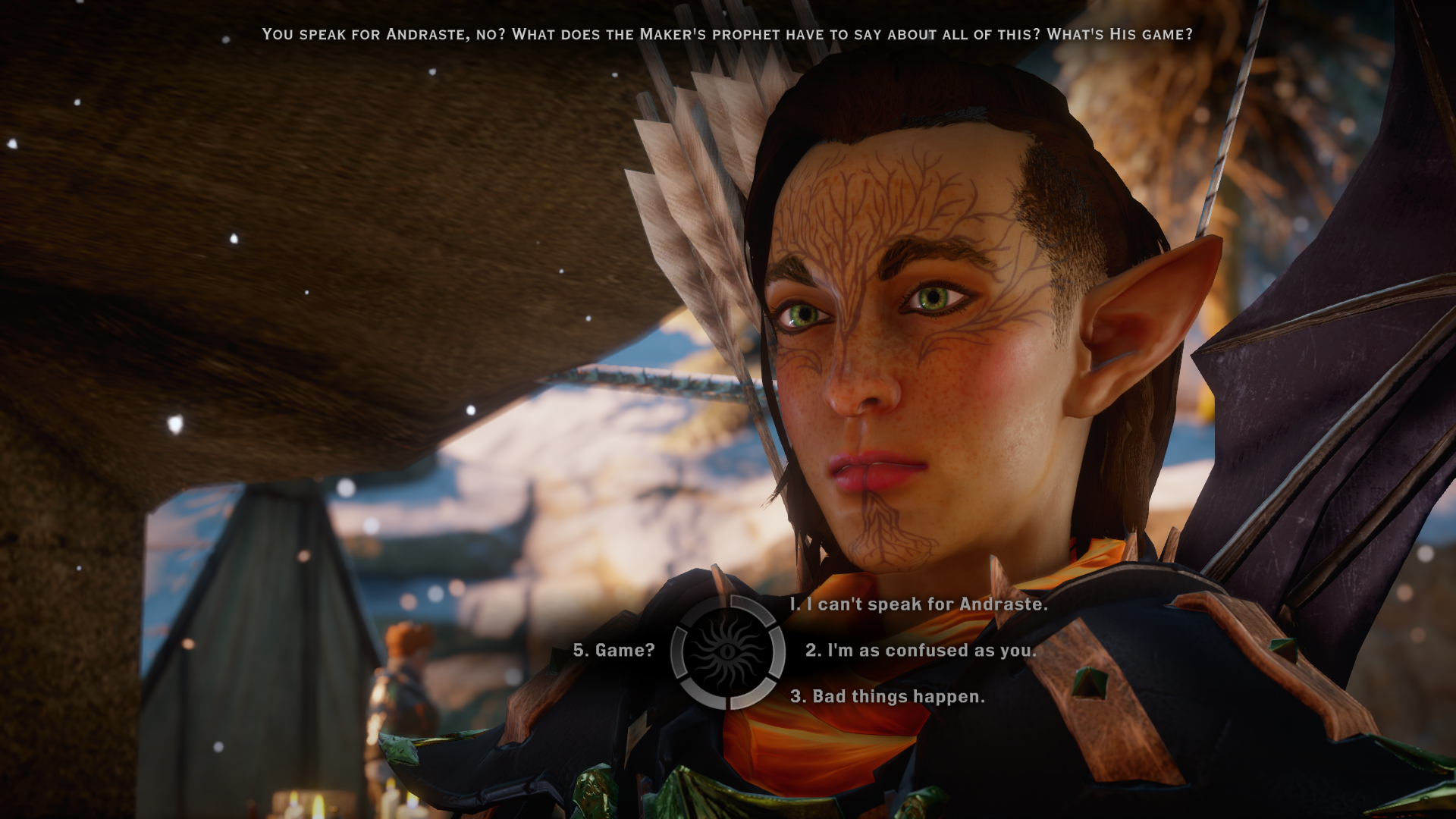
Dragon Age: The Veilguard has a lot of rewards for fans of Dragon Age: Inquisition who’ve stuck out the decade-long wait between the two games. And the first one to appear will be the chance to recreate your version of Inquisition’s player character for their appearance in Veilguard.
As one of those patient fans, I’ve spent 10 years warmed by memories of my adventures in Dragon Age: Inquisition. It’s no surprise that sitting down to build my Inquisitor would engender a wave of feeling for this character and the story I crafted for them a decade ago — that’s, after all, the traditional emotional hook at which the best BioWare games excel.
But it wasn’t just nostalgia that had me in my feelings as I tweaked my Inquisitor’s hair, face, and background details: It was the idea that while she might not be a main character anymore, her story was still going. I was nearly 30 when I played Inquisition, and now I’m nearly 40. But my Inquisitor is 10 years older, too, according to when Veilguard is set — and dammit, Inquisitor Haleth Lavellan, the Herald of Andraste and Comtesse of Kirkwall, is still in the game. Literally, yes — but more importantly, metaphorically.
The classic hero story is a province of young and untested adventurers, especially in the RPG style of high fantasy yarns that occupy a lot of gaming. And the story of the epic hero tries to end at Happily Ever After, usually the moment the quest objective is reached, because that’s where all the narrative tension and catharsis is. It makes sense! (There are plenty of exceptions to this, but they’re just that: exceptions.)
But role-playing games can also be a great place to explore lifetimes of adventure, not merely That One Weird Summer I Had a Tadpole in My Head. And in some ways, I primed myself to have a lot of feelings about older heroes and legacies when I booted up Veilguard by playing a game that’s expressly about that right before. I bridged the gap between my pre-Veilguard replay of Inquisition and actually playing Veilguard (courtesy of early code from BioWare) by dipping into Worldwalker Games’ Wildermyth.

Wildermyth is a tactical RPG in which you play a series of procedurally generated adventures with procedurally generated (and largely customizable) teams of heroes. You follow each hero from a plucky and inexperienced adventurer through the ups and downs of a unique story designed to have the vibe of a long-running fantasy tabletop campaign. You watch your characters experience victory, loss, transformation, and for some, even love, children, and retirement in old age. Then, when their story is done, you can start up a new arc, with a new threat, and build a group that’s a mix of new adventurers, veteran characters from your last game, and even the kids of your old team.
I was still thinking about how strongly those legacy mechanics had endeared me to Wildermyth’s comparatively thin characters when I booted up Dragon Age: The Veilguard and started making my Inquisitor. It’s not the first time that Dragon Age has let you build your old PC so they could appear in a new game — Inquisition surprises you with a mid-game trip to the character creator to make your own Hawke, the player character of Dragon Age 2. But with Hawke, you’re picking up with them only a year or so after the uncertain conclusion of their game. There’s no gap there, no invitation to ponder how it’s been 10 years since the Inquisitor walked out of the Breach and pieced the fractured nations of Southern Thedas back together… and yet their story isn’t over.
When I and the other players in my decade-long tabletop campaign put our heads together about our characters, a frequent topic of daydreaming is imagining the lives they’ll lead after we close the book on the campaign (psst, don’t tell our GM, the story isn’t over yet). Now, part of this is absolutely us showing our age: We’re all clustered around 40, and we’ve been playing characters in that Classic Fantasy Protagonist age range of About 20-About 30 all this time. We know there’s a lot more life on the other side of that divide, and we want it for them, too.
But while I respect and support my friends who are determined that their character will settle down and get domestic, I yearn for something different. I want to know that there are more adventures in her future. With the Inquisitor, Dragon Age: The Veilguard is giving me that. There was an end to the story of the Inquisition, but the Inquisitor is still here, making moves. (What kind of moves? I had to play the game to find out.)


In the character creator, I did my best to replicate my Inquisitor’s face (or at least how she might have been designed in Veilguard’s smoother art style), but I also made a bunch of considered changes. More weathered skin, grayer hair, and a different cut — no more braids, she’s working with a prosthetic hand now, and while she could get someone to do it for her, I see her as wanting more independence. I locked in her pivotal decisions about the Inquisition, and her romantic partner (the man every snooty human noble at the snooty human ball wanted to bang), and I picked out her voice, the low British tones of actor Alix Wilton Regan.
I’m intimately familiar with Regan’s voice, after all the hours I poured into Inquisition, but I hit the voice test button anyway, for kicks. “It’s good to see you again,” said my Inquisitor.
That was a cheap shot, BioWare, but it hit home. It is good to see my Inquisitor again, and it’s good news for all of those who are on the other side of that Untested Fantasy Hero age to see that she still has a hand in (no pun intended) the state of Thedas.
